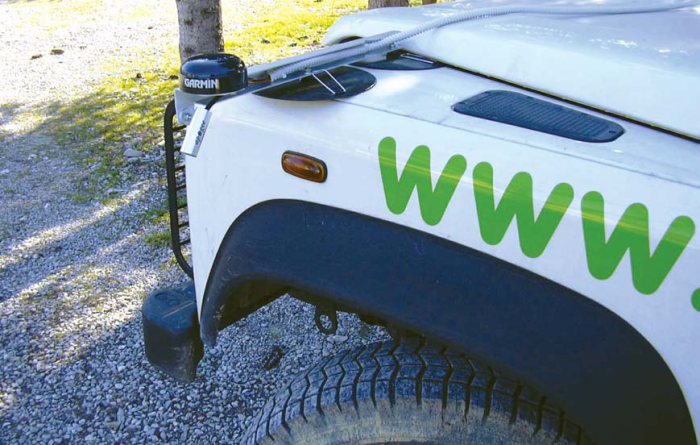


イタリアという名前は、多くの人にとって太陽と温暖な気候を連想させます。これは多くの場合、十分に真実です。しかし、イタリアは山岳国でもあり、冬の間はどこでも雪や氷が発生する可能性があります。そのため、イタリアの中心部にあるペルージャ県は、路面の氷形成を予測するプログラムを立ち上げました。このプログラムは、ペルージャ大学と、イタリアに拠点を置くCampbell Scientificのシステム インテグレーターである Ecosearch によって運営されています。
プログラムの最初の部分は、1) 選択された 3 か所における氷形成の可能性を示す気象パラメータと実際の氷形成との関係、および 2) 路面温度の変動性を検証することを目的としています。
このプログラムの第 1 部の結果に基づいて、将来的には気象観測所の拡張ネットワークが実装される予定です。
監視ステーション
予算の制約により、高価な氷検出システム (スペクトル カメラ) は検討できませんでした。一方、広範囲にわたる調査により、路面温度、湿度、導電率に基づく従来のシステムの信頼性は、まったく信頼できないことがわかりました。そのため、実用的に問題に取り組むことにしました。3 つの実験ステーションで、主要な気象パラメータ、土壌温度、導電率、熱流を監視します。さらに、ヒーターを備えた湿度センサーが氷検出器として機能します。気象パラメータが氷形成の可能性があることを示すと、ヒーターがオンになります。抵抗の変化は、乾燥から湿潤への移行を示します (この場合、ヒーターによって溶けた氷がセンサー表面を濡らします)。
その後、ペルージャ大学は、天候と道路のパラメータを湿度センサー(センサー自体は路面コーティングを再現した表面の真上に設置)上の実際の氷の形成に関連付けるアルゴリズムを開発します。
マッピングシステム
路面温度の変動性を評価するには、マッピング システムが必要でした。これは、赤外線高精度温度計 (Apogee の IRTS-P) に接続されたデータ収集システム (CR10X) で構成され、各測定値の正確な位置は、Garmin の高精度 GPS システム (車両のフロント ウィング左側に表示) と Trumeter の電子走行距離計 (車両後部に下図) によって決定されました。
マッピング システムは、できるだけ「使いやすい」ものである必要がありました。オペレーターは、自分のコードと道路コードを入力して、測定値をディスプレイで確認できなければなりません。そのため、システムには DataView ディスプレイが装備され、追加のキーパッドが接続されています。システムには、温度センサー、GPS、オドメーター用の外部高速コネクタがあります。内部バッテリーは、車両のシガー ライター接続を介して充電できます。3 つのシステムが 3 台の道路保守車両に取り付けられています。IRTS-P によって測定された表面温度の精度は、Delta Ohm の高精度接触温度計との比較によって検証されます。
Campbell Scientific, Ltd. の詳細については、www.campbellsci.co.ukをご覧ください。